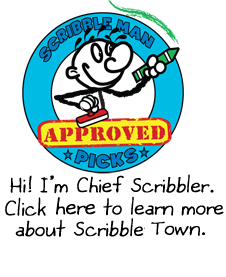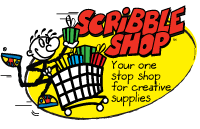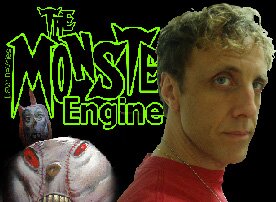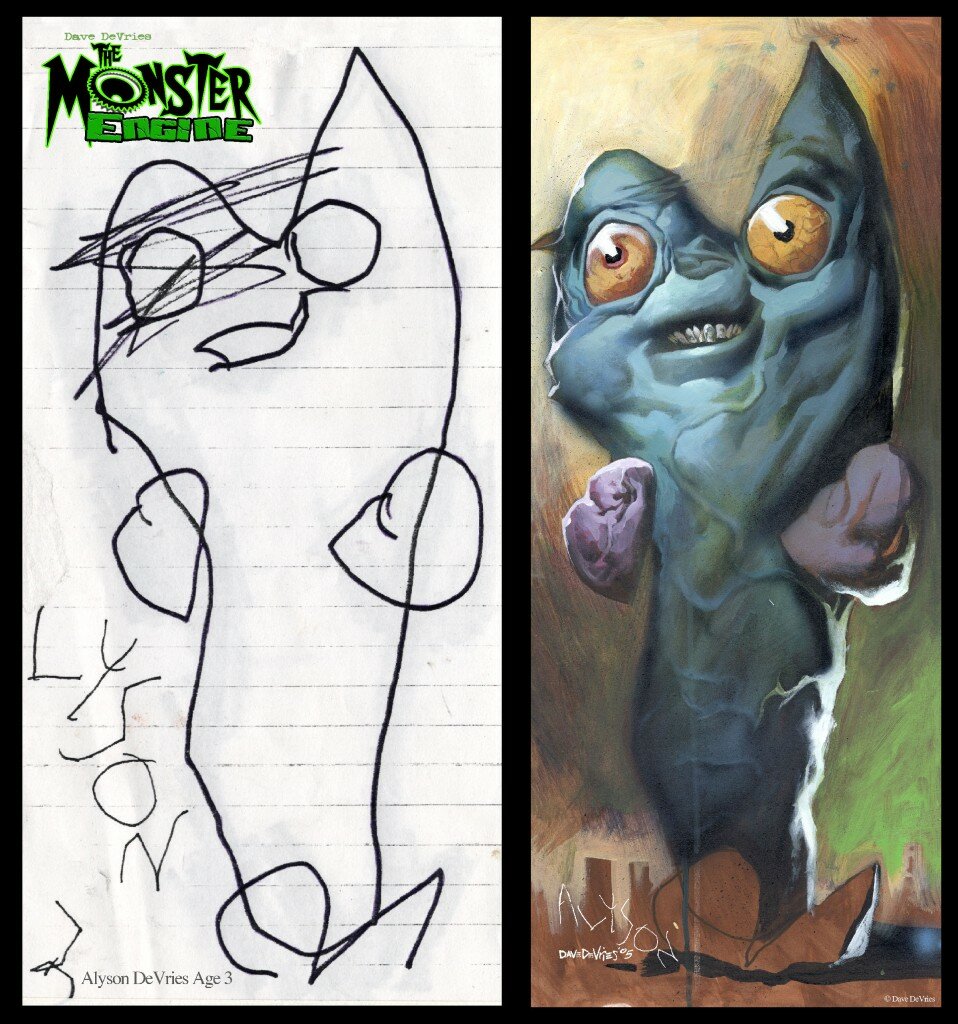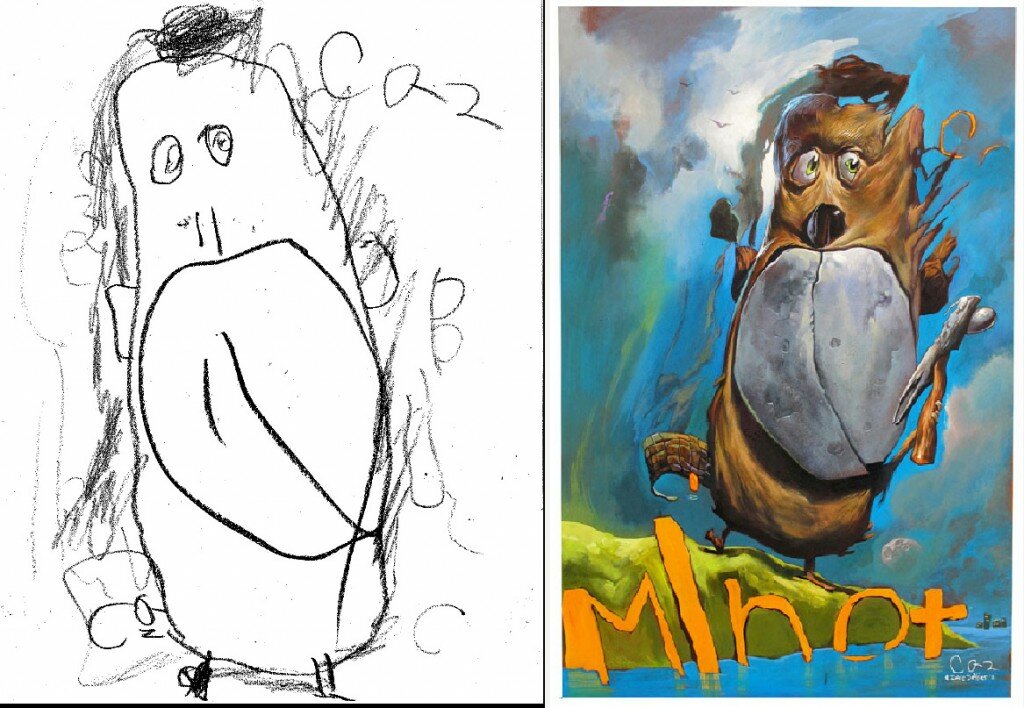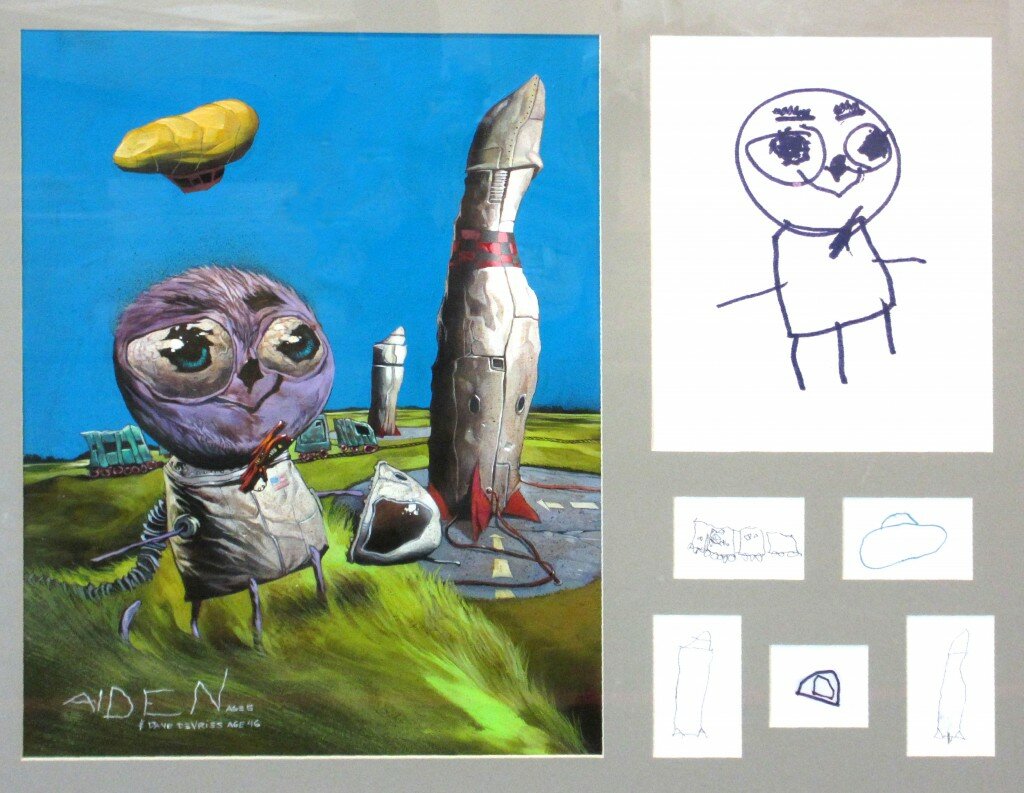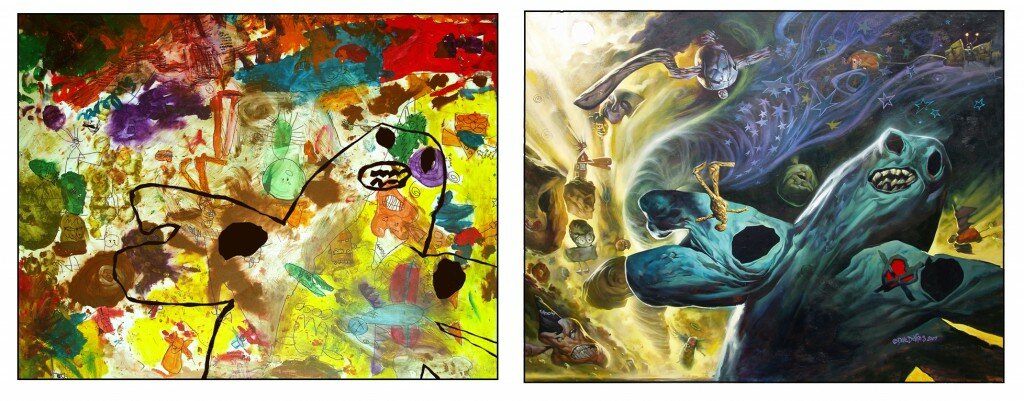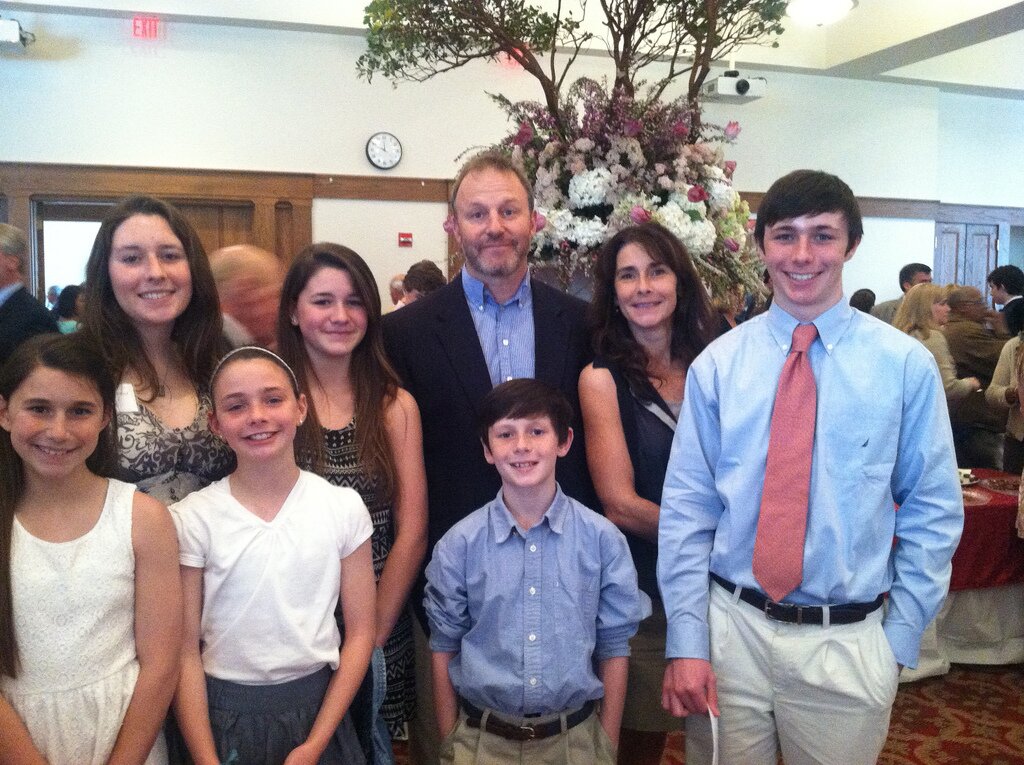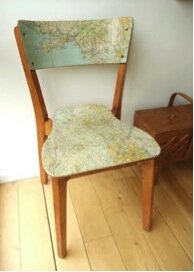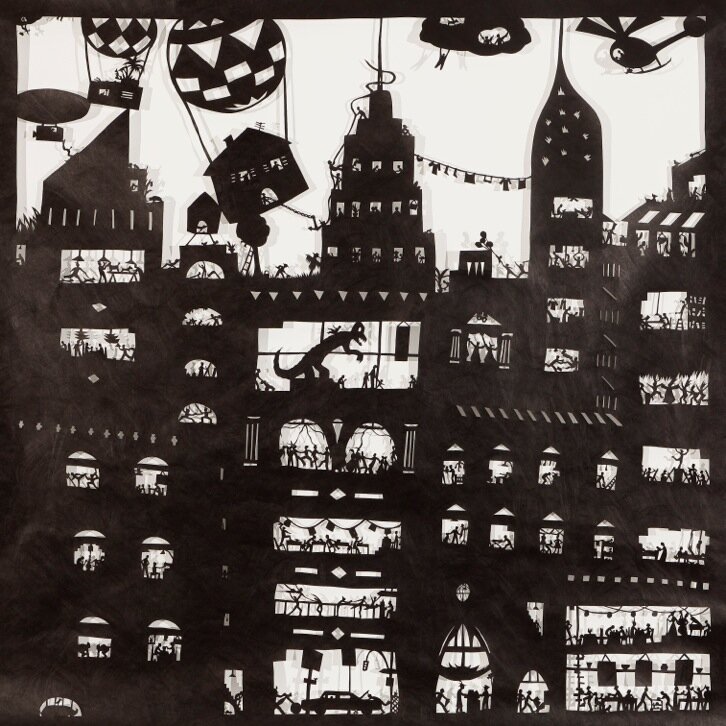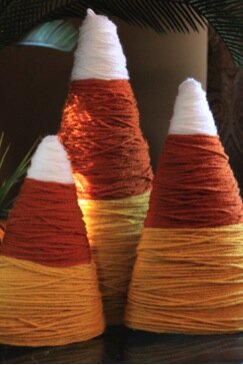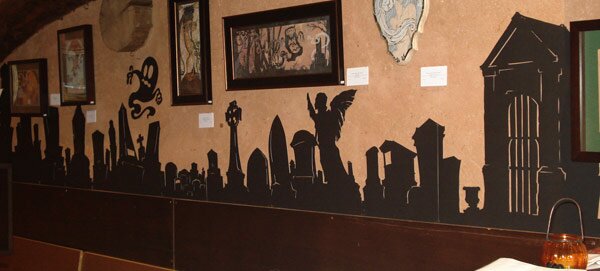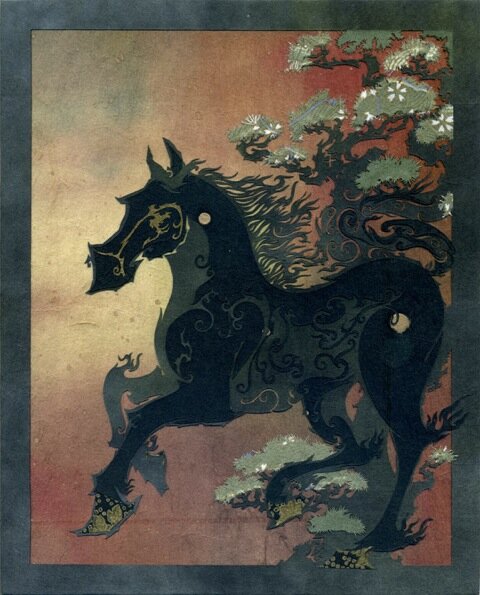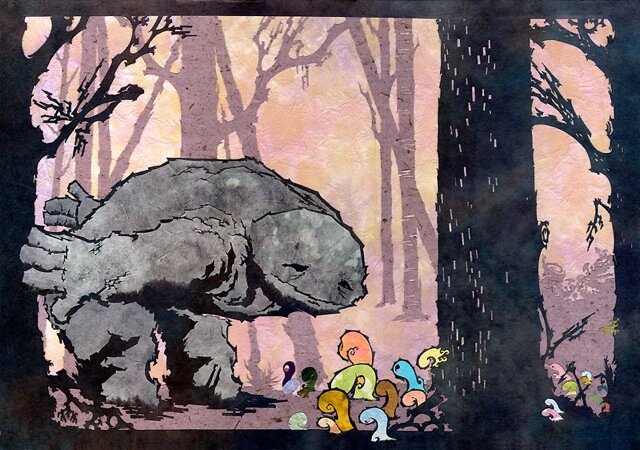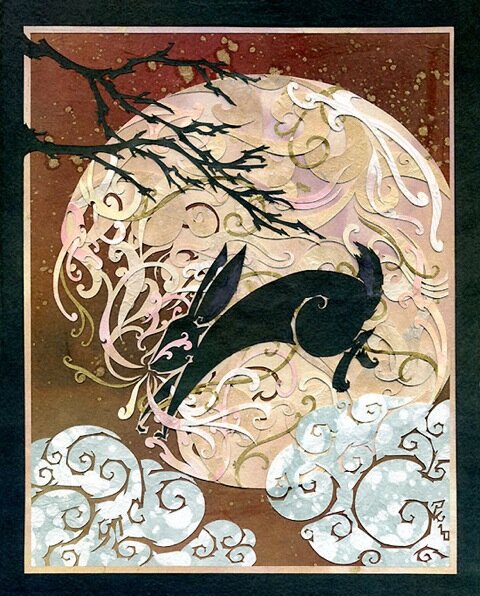Scribble Artist Interview with Francisco Bustamante!
Scribble Town (ST): To quote Joanna Greenhill, “Francisco Bustamante is both the subject and object of his work.” He pulls you in with his colors, lines, and unspeakable movement found in his works. The intrigue has been initiated and we are so lucky to have Francisco with us to talk with him more about him and his artwork. Francisco, you work with a number of materials like oils, gold leaf, stoneware, etc. How do you choose which medium to use? Is there one in particular that you feel most comfortable with?

Francisco Bustamente
Francisco Bustamente (FB): Throughout the years that I have been working in art, my main medium has been oil paint. I feel very comfortable with this medium since has made me grow as an artist the last 20 years. Still, I have always been working in other mediums as well, and lately, thanks to close friend from Chile who works in ceramics I discovered stoneware. And that has been a big and nice surprise since in this case I am actually building forms with my hands.

Francisco Bustamente
ST: Your paintings are often gilded with gold. The shininess and vibrant colors brings an air of decadence and respect. What is your fascination with using gold leaf? I wonder what it represents for you.
FB: I was born in Lima, Peru. and in Peru gold leaf is present in many things. To start with, Peru was the territory of the Inca’s civilasation, which among other things used gold in many ceremonial activities. They considered the Sun as their God, and the work with gold was one of their sacred materials. Later, with the arrival of spanish people, they continued using gold in their religious activities (Catholic Church). These are some of the reasons which I think moved me to work with this material.

Francisco Bustamente
ST: Knowing the relation of gold to your personal history now makes the paintings even more meaningful! What are you currently working on? You seem to be a very symbolic person. How have the themes of your artwork evolved?
FB: At the moment I am preparing an exhibition for Washington DC. and in mid-November I will show paintings at the Pinta Art Fair NY, which will take place in 82 Mercer street from Nov 15th to Nov 17th.
I am currently trying to achieve in paintings the idea of working with light and shadows and how each one relates to the other. My work has evolved throughout the years influenced by family reasons from one side, like for example the death of my parents at some point and how to translate those emotions into an actual body of work…..which by the way is very helpful. Nowadays my main concern is to get into the depth of the act of painting, is some kind of a personal fight, a good fight, that keeps me engaged with work.
ST: Art is a wonderful way to process conflict, joy and all the emotions that happen in between and beyond. On your website, when I look at your works, it is almost like I am reading your diary. Your artwork is obviously so personal. When and how did your creativity start to grow?
FB: Ever since I can remember as a child I was always drawing, painting with crayons or enjoying looking at nature. I guess I was a rather shy and silent kid. but mainly because my head was somewhere else, sort of dreaming…….as many children, I guess.

Francisco Bustamente
I would always look forward to art classes in school, whereas in the other hand, I would suffer a lot whenever math or geometry were around ![]() ……I was never good at it. In my family there are only lawyers so I did not know that I could actually give all my time to art. I started studing architecture for one year, but still, it was far from what I wanted. Fortunately my parents support my idea of getting into art school. From then on, I was all smiles.
……I was never good at it. In my family there are only lawyers so I did not know that I could actually give all my time to art. I started studing architecture for one year, but still, it was far from what I wanted. Fortunately my parents support my idea of getting into art school. From then on, I was all smiles.
ST: You just did what you had to do! And that was to make art. Who are some inspirational artists for you?
FB: I completely admire the work of the Spanish artists Diego Velazques and Jose de Rivera for their amazing talent in the use of light and shadow in their paintings. On the other hand I love the work of Lucien Freud and Francis Bacon for the powerful results in their paintings. Finally I cannot avoid mentioning Rothko. His paintings are as well so powerful, and the sizes he uses make the viewer get deep into his paintings.

Francisco Bustamente
ST: Those artists also are interested in your currents themes so I can really see the connection. What is an exercise or activity you do when you start making art in your studio?
FB: The first feeling I have when I am in front of a white canvas is being absolutely terrified. I don’t understand how I am going to be able to get the idea I have in my head into an actual painting. Fortunately, something strange and magical happens and work later happens. The first part of the actual work is to cover the canvas with gold leaf, which basically is the light that has already arrived to the canvas. only then I start the process of oil paint.
ST: I love how your work is built off of light! It reminds me that light carries all colors of the rainbow. Any other advice for our Scribblers?
FB: My tip or advice to anyone who is involved in the work of art, no matter what medium they are using is: JUST DO IT!, do not let insecurities get into you or your work. there is no failure here, just the fun of creating. and if at some point you feel there are errors, think twice, because errors can lead you to a deeper and freerer result in your art piece.
ST: Thank you Francisco! We can’t wait to see more of your artwork and have fun at your upcoming art exhibitions!

Francisco Bustamente

